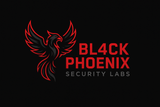Arduino Embraces Matter: A New Era for Open Source IoT?

A Major Shift in the Smart Home Landscape
The Internet of Things (IoT) has long been a fragmented landscape, a digital Tower of Babel where devices from different manufacturers struggle to communicate. A recent development, however, signals a potential turning point. A discussion highlighted a significant move by Arduino, a cornerstone of the open-source hardware movement: the introduction of modules supporting the Matter and Thread protocols. This isn't just another product launch; it's a powerful endorsement of a new standard that could finally unify the smart home.
Understanding the Matter/Thread Revolution
For years, protocols like Zigbee and Z-Wave have vied for dominance, each with its own ecosystem and hardware requirements, often necessitating multiple hubs and complex setups. The original post correctly identifies Thread as a next-generation mesh networking protocol designed for low-power IoT devices. Layered on top of this is Matter, an application layer standard backed by tech giants like Apple, Google, and Amazon. The goal of Matter is simple yet audacious: to create a single, unified language that all smart home devices can speak, regardless of their manufacturer.
The implications are profound. For consumers, it promises a future where a new smart light, thermostat, or sensor works seamlessly with their existing setup out of the box. For developers, it lowers the barrier to entry, allowing them to build for a single, interoperable ecosystem.
The "Soft-Opensource" Conundrum
Arduino's implementation, described as "soft-opensource on Flux," introduces a critical point for analysis. While Arduino has long championed the open-source ethos, this term suggests a more nuanced approach. It likely means that while the designs and core components are accessible, they may be tied to a specific platform (Flux) or involve proprietary elements, particularly in the radio firmware or certification modules.
At Bl4ckPhoenix Security Labs, this raises important questions:
- Transparency vs. Usability: Does this model strike a fair balance between providing an easy-to-use solution and maintaining the full transparency that open-source hardware is known for?
- Security Implications: If critical components of the communication stack are closed-source, it limits the community's ability to independently audit the code for vulnerabilities. As Matter becomes the backbone of our homes, ensuring its security is paramount.
- Vendor Lock-in: Is this a step toward a more accessible ecosystem, or could it inadvertently create new forms of dependency on specific platforms or component suppliers?
The Future of a Connected, Secure Home
Arduino's adoption of Matter is a watershed moment. It democratizes access to the next generation of smart home technology, empowering makers, startups, and hobbyists to build devices for this new, unified world. The promise of a truly interoperable smart home is closer than ever.
However, the community must proceed with a healthy dose of critical optimism. The transition to this new standard will require vigilance, particularly around the security and true openness of the hardware we bring into our most private spaces. As we build the future of the connected home, the conversation must not only be about what is possible, but also about what is secure, transparent, and truly open.




